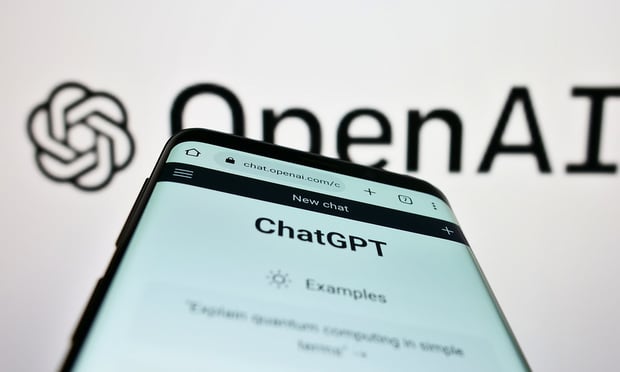Features

AI Is Coming To Microsoft 365: What You Need to Know
For those using Microsoft 365, AI tools are rapidly becoming a reality, as Microsoft has introduced and announced several applications with AI-driven components, including Microsoft Viva, Microsoft Teams Premium, and Microsoft Copilot.
Features

Generative AI and Copyright Law
Generative AI can do it all. However, its increasing popularity means that users of GAI programs face substantial intellectual property risks — particularly when businesses use GAI for marketing and other public-facing purposes.
Features

The Expanding Influence of Legal Operations: New Report Focuses on AI, CLM, and Law Department Transformation
Operations leaders are driving efficiencies, helping manage the growth of data, and harnessing the power of digital transformation to fuel business success while minimizing risk. They are also taking on greater roles and helping general counsel shape strategies that include embracing CLM, AI, and other tools to enhance the way their teams work.
Features

Who Is Legally Liable for Internet AI Deepfake Content?
Most agree that internet deepfake (deep learning + fake) content is widespread and may be used to manipulate the public, attack personal rights, infringe intellectual property and cause personal data difficulties. However, little agreement exists as to who is legally liable for internet AI deepfake content.
Features

Legal Tech: TAR As a Reincarnation of Human Review
This article seeks to provide clarity and context on the different types of AI available in the legal industry today and how the new GPT technology fits into that landscape. More importantly, it will illustrate the potential impact of the next generation of AI on litigation and legal practice as a whole.
Features

How Law Firms Can Utilize Artificial Intelligence for Marketing
Artificial Intelligence will revolutionize law firm marketing forever. Law firms are now (or should be) leveraging the potential of AI in order to enhance their marketing efforts. By harnessing the capabilities of AI, law firms are able to expand their marketing strategies, boost efficiency, accuracy, and overall client engagement.
Features

AI Regulation In the U.S.: What's Coming, and What You Need to Do, Part 2
Part Two of a Two-Part Article In Part One, last month, the authors addressed the industries most affected by AI, and began the discussion on U.S. federal and state regulations to expect in 2023. Part Two continues the discussion on potential federal AI regulation and what companies can do to prepare.
Features

AI Regulation: What's Coming and What You Need to Do
Part One of a Two-Part Article Despite the steady growth of global AI adoption, there is no comprehensive federal legislation on AI in the United States. Instead, the U.S. has a patchwork of various current and proposed AI regulatory frameworks. It is critical for organizations looking to harness this novel technology to understand these frameworks and to prepare to operate in compliance with them.
Features

IP Experts Discuss AI Art Copyright Litigation
IP experts weigh in on a case involving AI-created images based on an original work. The outcome of the case may have a significant impact on AI development and generative art.
Features

AI Considerations for In-House Counsel
Having an AI policy that outlines acceptable use, and documenting assessments that establish that AI systems are used in a manner consistent with the policy and that the benefits outweigh potential harms, can go a long way in managing legal and reputational risk.
Need Help?
- Prefer an IP authenticated environment? Request a transition or call 800-756-8993.
- Need other assistance? email Customer Service or call 1-877-256-2472.
MOST POPULAR STORIES
- The 'Sophisticated Insured' DefenseA majority of courts consider the <i>contra proferentem</i> doctrine to be a pillar of insurance law. The doctrine requires ambiguous terms in an insurance policy to be construed against the insurer and in favor of coverage for the insured. A prominent rationale behind the doctrine is that insurance policies are usually standard-form contracts drafted entirely by insurers.Read More ›
- A Lawyer's System for Active ReadingActive reading comprises many daily tasks lawyers engage in, including highlighting, annotating, note taking, comparing and searching texts. It demands more than flipping or turning pages.Read More ›
- The Brave New World of Cybersecurity Due Diligence in Mergers and Acquisitions: Pitfalls and OpportunitiesLike poorly-behaved school children, new technologies and intellectual property (IP) are increasingly disrupting the M&A establishment. Cybersecurity has become the latest disruptive newcomer to the M&A party.Read More ›
- Abandoned and Unused Cables: A Hidden Liability Under the 2002 National Electric CodeIn an effort to minimize the release of toxic gasses from cables in the event of fire, the 2002 version of the National Electric Code ("NEC"), promulgated by the National Fire Protection Association, sets forth new guidelines requiring that abandoned cables must be removed from buildings unless they are located in metal raceways or tagged "For Future Use." While the NEC is not, in itself, binding law, most jurisdictions in the United States adopt the NEC by reference in their state or local building and fire codes. Thus, noncompliance with the recent NEC guidelines will likely mean that a building is in violation of a building or fire code. If so, the building owner may also be in breach of agreements with tenants and lenders and may be jeopardizing its fire insurance coverage. Even in jurisdictions where the 2002 NEC has not been adopted, it may be argued that the guidelines represent the standard of reasonable care and could result in tort liability for the landlord if toxic gasses from abandoned cables are emitted in a fire. With these potential liabilities in mind, this article discusses: 1) how to address the abandoned wires and cables currently located within the risers, ceilings and other areas of properties, and 2) additional considerations in the placement and removal of telecommunications cables going forward.Read More ›
- Guidance on Distributions As 'Disbursements' and U.S. Trustee FeesIn a recent case from the Bankruptcy Court for the District of Delaware, In re Paragon Offshore PLC, the bankruptcy court provided guidance on whether a post-plan effective date litigation trust's distributions constituted disbursements subject to the U.S. Trustee fee "tax."Read More ›
